The Development of the Camera: A Timeline from the 1600s to the 21st Century
11/03/2024 2024-03-12 12:30The Development of the Camera: A Timeline from the 1600s to the 21st Century
ThoughtCo
H1: Development of the Camera Concept:
Photography has been crucial for recording historical information as well as your most treasured family experiences over the years. In actuality, cameras have been around since the 1600s and even before.
In order to help you understand how technology developed from pre-film cameras to the digital camera or smartphone you use to take images of family gatherings, capture archival professionals have put up a comprehensive history of the camera.
Discover the key turning points in the history of cameras, such as the camera obscura, daguerreotype, roll film, 35mm film, Polaroid, digital cameras, and smartphones, by continuing to read.
The First Camera, the Camera Obscura
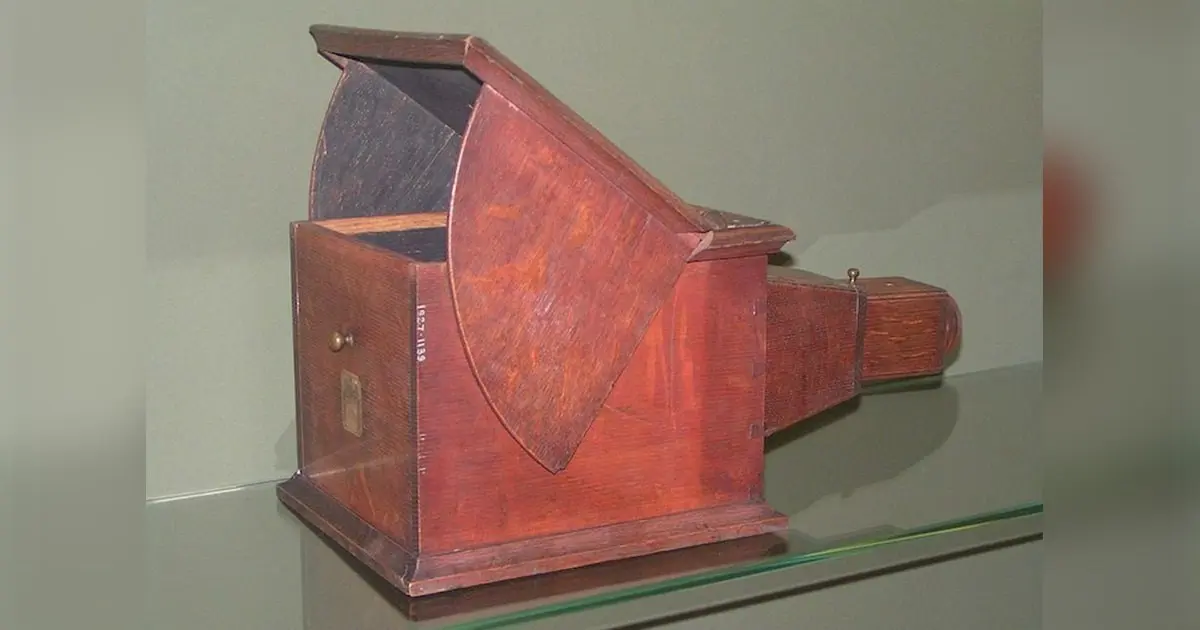
My Modern Met
Most people believe that the camera obscura was the earliest camera and the forerunner of film cameras. A naturally occurring phenomenon known as a “dark room” or camera obscura projected an image via a tiny hole, or lens. This effect has been traced back to approximately 400 BC because it can be seen in natural settings.
When people ask, When was the first camera invented?” Ibn al-Haytham is frequently cited as the inventor of the pinhole camera box, which was created between 900 and 1000 AD. However, it has been determined that the earliest known use of a man-made device to create a portable camera obscura effect dates back to approximately 1550.
During this period, René Descartes and Leonardo da Vinci were among the well-known intellectuals who studied optics and employed the camera obscura as a drawing tool. In actuality, the original definition of photography was “drawing with light.”
Johann Zahn then created the first portable camera for photography in 1685. Still, it took more than a century for the pinhole camera obscura effect to produce the first ever permanent photograph.
In 1826, Joseph Nicephore Niepce exposed bitumen-coated pewter for eight hours by using a sliding wooden box camera to control the camera obscura phenomenon. Then, in 1834, Henry Fox Talbot used a mix of chemicals and optics to establish a way to fix images on paper. For the first time, this allowed for the creation of multiple print negatives.
The techniques used by the Camera Obscura, such as exposing contrasting images with light, controlling light with a pinpoint lens, and studying optics in general, would have an impact on more familiar later photographic technologies like daguerreotypes and celluloid film.
Using the Daguerreotype Camera to Take Early Photos
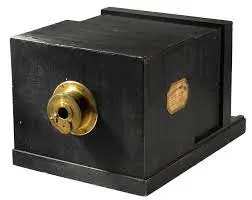 Wikipedia
Wikipedia
Following the creation of the first permanent images in the early 1800s, photography advanced even further in 1839 when Louis Daguerre invented the daguerreotype, a metal plate method. This format uses a copper plate coated in silver chloride that needs to be developed with hot mercury and sensitized with iodine. Even if it seems difficult by today’s standards, that more effectively revolutionised photography during that time.
The Giroux was a mirrorless daguerreotype camera with a detachable glass screen at the back that allowed for focus adjustment. It was the first photographic camera ever created for mass production. The photographer unzipped the lid after inserting the copper plate so that light could reach it and create a picture.
It took a few minutes to thirty minutes to complete. Nevertheless, later daguerreotype cameras and rival calotype cameras reduced the exposure time to a few seconds by using new lens designs, enhancing the chemical process, and making other improvements.
Using a concave mirror in place of a lens inside a daguerreotype camera was one of the most significant camera inventions of the 19th century. Alexander Wolcott received the first US patent for photography in 1839 when he devised the mirror lens. This means a shorter exposure time—roughly five minutes!
Daguerreotype cameras were first used during this era, which also saw the invention of many modern lens types and the employment of chemicals for mirror development. This made it possible to create the first motion picture cameras and multi-exposure roll film cameras.
Roll Film: Several Views
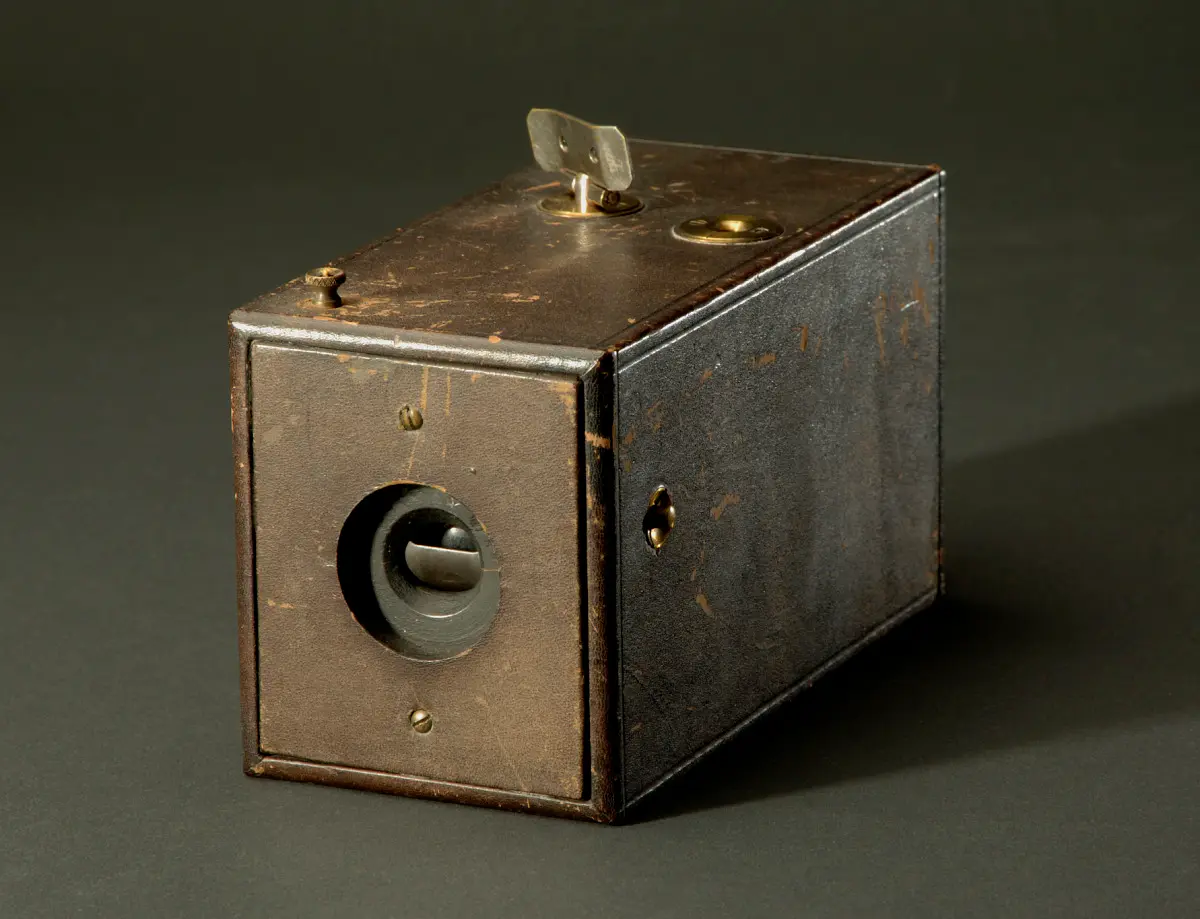
National Museum of American History
The Kodak, invented by George Eastman in Rochester, New York, in 1888, was the first camera to use a single roll of celluloid emulsion film. In comparison to other camera breakthroughs, the initial Kodak camera could capture negatives in a matter of milliseconds. The film was advertised as a point-and-shoot option and was scheduled to be developed by Eastman Kodak.
Due to the success of the first Kodak camera, the firm grew to become one of the biggest in the United States, which enabled them to keep inventing additional camera options, such as the iconic Kodak Brownie that was introduced in 1900.
For the first time in the history of photography, the Brownie model was affordable and accessible to the majority of middle-class families. This implied that a greater number of people than ever before could record family gatherings, weddings, and celebrations.
Several inventions made during this time will further advance the development of the camera, such as the ability to capture several exposures on a single roll of film, the portability of point-and-shoot cameras, and the simplicity of done-for-you photography.
35mm Film: Compactness and Adaptability
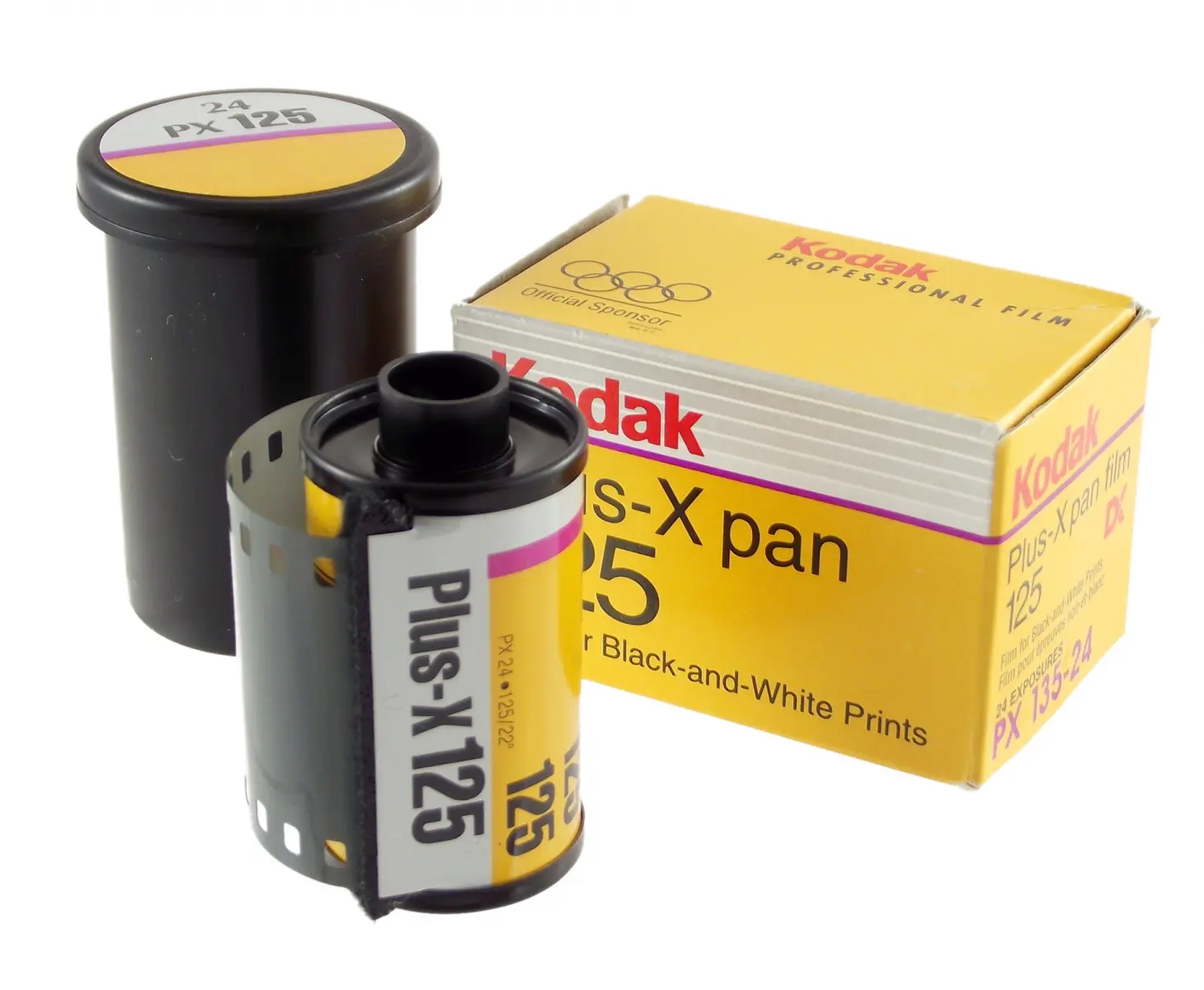 Museum of Obsolete Media
Museum of Obsolete Media
The introduction of Kodak 135 film in 1934 marked the next significant development for photographic film. It was feasible to use the same size and type of film in cameras of any brand thanks to this 35mm wide film.
In addition, the camera operator would simply need to insert the film canister, wind it, and watch as each picture was shot since it would automatically adapt. The photographer could then open the roll when it was full without having to worry about overexposing the light-sensitive film.
Although Kodak invented 35mm film initially, Oskar Barnack’s Leitz Leica camera brand would offer numerous features that are now common on cameras. When the Leica One was introduced in 1930, it had interchangeable lenses. The contemporary viewfinder, range finder, and 1/1000th of a second shutter speed would be added to later Leica models.
Along with the Nikon F 35mm SLR, which came with a full complement of lenses, motor drives, straps, and other accessories, Fujifilm introduced the first instant-return mirror single-lens reflex (SLR) and twin-lens reflex (TLR) cameras in the 1950s. The first colour photograph was produced in 1961 by Thomas Sutton, the creator of the SLR camera, not long after.
Because of the lightweight and user-friendly designs of these camera innovations, photojournalism has become much more popular. The heavily photo-heavy Life magazine was created in 1936 as a result of these inventions, and it would set the standard for over eight decades.
Polaroid Camera: Immediate Pleasure
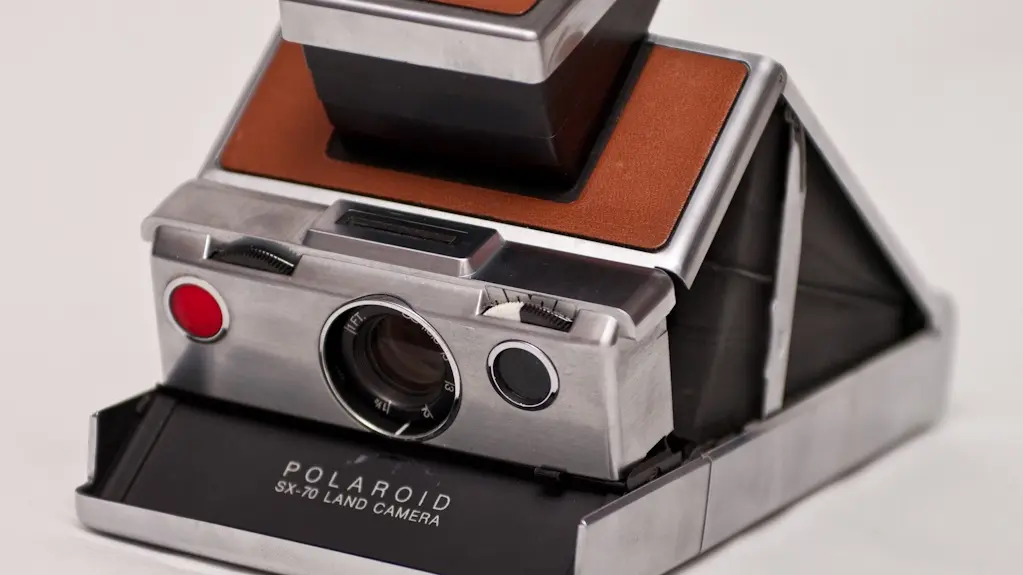
The Irish times
Even though 30-minute daguerreotype exposure times are long gone, the speed at which they were developed only increased with the introduction of instant cameras. Edwin Land created the Polaroid Corporation in 1948, which dominated the instant photography industry and produced the instant camera.
Silver halide emulsion is used to adhere the film negative to the film positive in Polaroid cameras. After peeling the two parts, the user would discard the negative. Polaroids would finish this process on their own in later iterations. Throughout the 1970s, 1980s, and even into the 1990s, these instant Polaroid cameras were very popular. The classic white-framed Polaroid picture and the rapid satisfaction of taking and receiving a family snapshot instantly bring back fond memories for a lot of individuals. As a result, Polaroid is still producing instant cameras, with the most recent model coming out in 2021. Instant cameras made it much simpler to share hard copies of photos at family gatherings, and modern digital cameras also promise quick satisfaction.
H2: Concluding in a Snap!
As we conclude our journey through the evolution of the camera, it’s evident that this remarkable device has undergone transformative changes, reflecting not only technological advancements but also societal shifts and human creativity. From the humble beginnings of the camera obscura to the sleek and powerful digital cameras of today, each iteration has brought us closer to capturing moments in ways once unimaginable.
Yet, as we celebrate how far we’ve come, it’s important to recognise that the evolution of the camera is far from over. With rapid advancements in artificial intelligence, augmented reality, and computational photography, the future promises even more exciting possibilities. From revolutionary imaging techniques to immersive storytelling experiences, the camera continues to shape how we perceive and interact with the world around us.
As we stand on the brink of a new era in imaging technology, let us remember that behind every innovation lies a spark of human ingenuity and creativity. Whether you’re a professional photographer pushing the boundaries of visual storytelling or simply capturing everyday moments with your smartphone, the camera remains a powerful tool for expression and connection.
So, as we look back at where we’ve been and gaze forward to where we’re headed, let’s embrace the ever-evolving nature of the camera with curiosity, wonder, and a deep appreciation for the art and science of photography.
Digital Revolution with Digital Camera
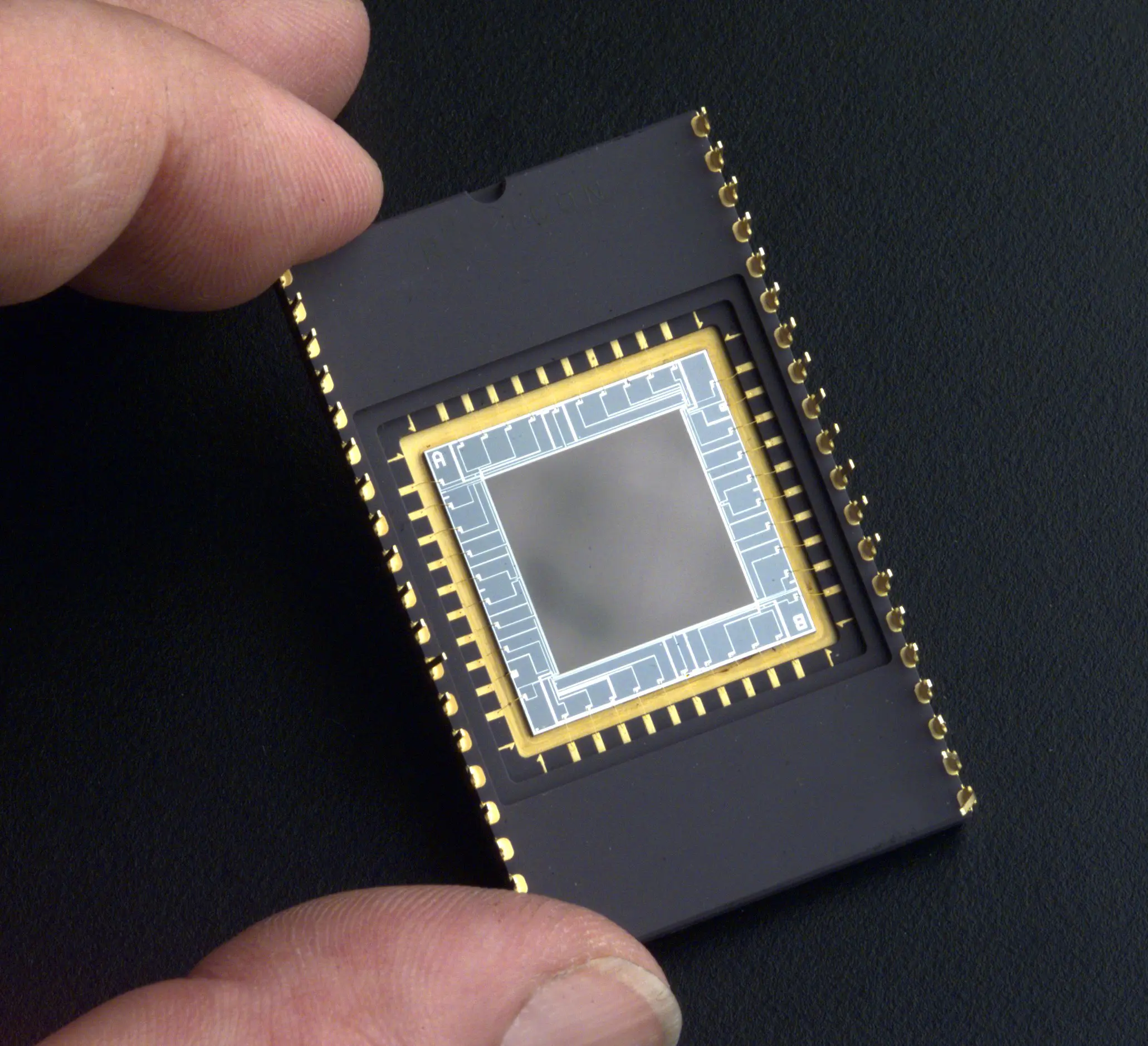
Wikipedia
The 1969-developed charged-couple device (CCD) was employed in early digital photography. By 1975, Steven Sasson, an engineer at Kodak, had developed the first functional prototype of a digital camera. The early digital camera, however, had a 23-second exposure period and a resolution of only 0.01 megapixels, making it annoying.
In 1990, Logitech produced the Dycam Model 1, the first digital camera to be sold commercially. It captured the data onto internal memory instead of using the same CCD technology, allowing you to connect it to your PC for viewing, downloading, and printing. The early 1990s also saw the release of digital manipulation software, allowing you to process, edit, and improve digital images at home.
Digital Single-Lens Reflex Cameras (DSLRs) quickly revolutionised the digital camera business, thanks to the efforts of Japanese companies like Nikon and Canon. These digital SLR companies, together with Fuji and Sony, continue to rule the digital camera market.
Smartphone Cameras: The Pocket Camera
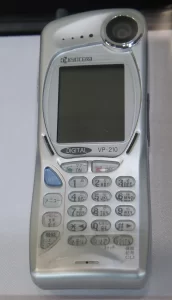
Wikipedia
The camera phone is the only remaining kind of camera, and it’s the one that most people use the most these days. The Kyocera VP-210, released in 1999, was the first mobile phone with a camera. The 2-inch screen made it possible to examine images instantaneously, but the usage of mobile phone cameras didn’t take off until the smartphone was developed.
Digital images could be sent and received between devices with ease when the original Apple iPhone was released. Complementary metal-oxide semiconductor (CMOS) chips replaced the previous CCD technology in these early iPhone models.
These days, cell phones come with many lenses, high resolution, video capabilities, and much more. Many individuals no longer use traditional digital cameras because smartphones nowadays come with such high-quality cameras. A digital camera does, however, provide nostalgia in addition to making it simpler to take action photos in low light and other situations.
Even if the direction of the camera’s evolution is unknown, automated cameras equipped with features like facial recognition, automated photo editing, artificial intelligence, and more will continue to expand the camera’s historical reach.
To conclude:
The camera obscura marked the beginning of the camera’s evolution, but there have been other important turning points as well, such as the daguerreotype, which made permanent, repeatable photography possible, 35mm film, and portable cameras, which made home cameras more widely available and user-friendly. Digital and smartphone cameras have supplanted film cameras as the most common and commonly used types of cameras in the modern era.
Families found it simpler to record significant occasions like birthdays, marriages, graduations, babies, and other treasured moments after reaching each of these benchmarks. Many families do, however, still have these priceless moments preserved on film, which can deteriorate with time. To guarantee that your old photo memories are kept for sharing and enjoyment by future generations, Capture can update them to digital format.













